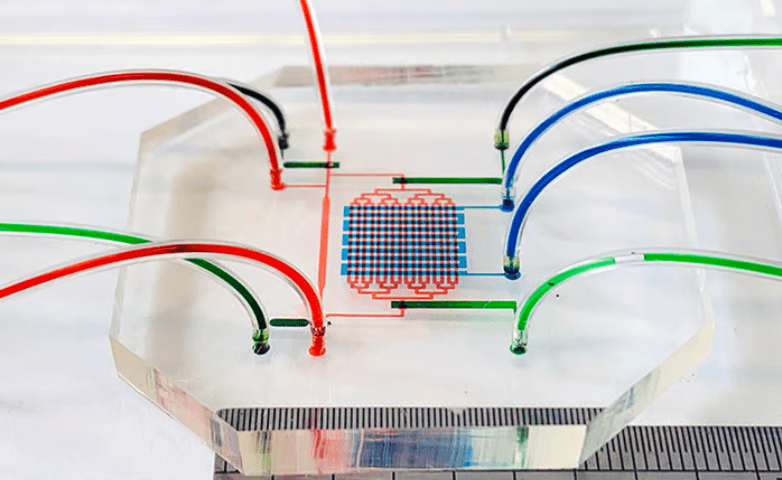Blood stem cell donors are in chronic short supply, posing problems for patients whose blood stem cells have been depleted by chemotherapy or who have diseases like aplastic anemia. Donor cells used in transplantation must be tissue-matched to patients, so those who come from minority ethnic backgrounds often struggle to find a compatible donor. And even when donor cells are successfully engrafted, there is no guarantee that the patient’s body won’t reject them.
Biomedical engineers have tried for decades to tackle this problem by attempting to create blood stem cells in the lab, with little success. But a new study from a research team at University of New South Wales (UNSW) Sydney sheds light on the long-standing mysteries behind how the cells develop as well as how they can be artificially induced for use in patients.
In the first study, published Tuesday in Cell Reports, first author Jingjing Li, Ph.D., and her colleagues described how they discovered that by mimicking embryonic circulation with a special culture system, they could create precursor blood stem cells capable of differentiating into various blood components like myeloid cells, monocytes and macrophages.
“Part of the problem (with earlier work) is that that we still don’t fully understand all of the processes going on in the microenvironment during embryonic development that leads to the creation of blood stem cells at about day 32,” Li said.
To answer this, the researchers looked at the mechanical aspects of the endothelial to hematopoietic transition, an event in embryonic development where endothelial cells—cells that line the walls of the circulatory system—transform into blood stem cells. Li’s team built upon results of other labs’ work in mice, zebrafish and human cell lines that suggested the stress of blood pushing against the aortic wall drove the transition.
To find out whether the process could be provoked in an artificial setting, the scientists built a three-centimeter by three-centimeter device that simulated embryonic circulation, then pumped through blood stem cells derived from an embryotic stem cell line. Separately, they cultured the embryotic stem cells in a rotating shaker system that models the shear stress of the cells against the walls of the circulatory system.
The scientists were surprised to find that not only did the cells grow into the precursor blood stem cells in both cases but also that within the device, small, aorticlike structures grew in its channels. This matches the way these cells form in the embryo: Blood stem cells emerge from the aorta and into the circulation, through which they flow to the liver for differentiation into blood cells.
“Getting an aorta to form and then the cells actually emerging from that aorta into the circulation, that is the crucial step required for generating these cells,” Robert Nordon, study co-author, said in a press release.
The team’s results complement those from another set of researchers at UNSW lab, this time under clinical hematologist and UNSW Professor John Pimanda. Pimanda’s team reported in Nature Cell Biology in late July that they had solved another piece of the puzzle: characterizing the cellular mechanism behind the transition of endothelial cells into blood stem cells. They discovered that a set of stromal cells arising from the mesoderm—one of the three germ layers that grows during embryonic development—was responsible for regulating the growth of blood stem cells in the aorta.
“Prior work by other groups had established that blood stem cells originate from endothelial cells lining the aorta during a window of development and that stromal cells surrounding the aorta had some role in controlling this process,” Pimanda told Fierce Biotech Research in an email. “Our hypothesis was that a specific and transient population of stromal cells accounted for inducing endothelial to blood conversion during the tight window of blood stem cell production from endothelial cells in the aorta.”
To figure out which stromal cells were doing the job, Pimanda’s team first imaged the aorta-gonad-mesonephros region of mouse embryos, an area on the lower part of the aorta known to be the source of blood stem cells in embryonic development. There, they found a population of stromal cells that expressed platelet-derived growth factor receptor A (PDGFRA), which is also found on the surface of mesenchymal stem cells that regulate blood stem cell population growth in the bone marrow. Through a series of assays in vitro and in mouse models, they saw that when endothelial cells from both embryos and adult mice were mixed with the PDGFRA+ stromal cells, they formed blood stem cells.
All the researchers have more work to do before their findings can be translated to the clinic. In the case of Li’s team, the scientists are working on scaling up production of blood stem cells from pluripotent stem cell lines using bioreactors. For Pimanda and his colleagues, the next step will be to confirm the presence of mesoderm-derived PDGFRA+ stromal cells in human embryos. From there, they could be produced from induced pluripotent stem cells and eventually used as a source for converting endothelial cells into blood stem cells.

